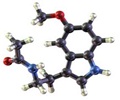A tongue-tying device that effectively pulls the tongue closer to the jawbone and opens up the airways might help in treating problems of snoring and sleep apnea
A tongue-tying device that effectively pulls the tongue closer to the jawbone and opens up the airways might help in treating problems of snoring and sleep apnea, suggest early results of a study.
Snoring is the vibration of respiratory organs and the resulting sound due to obstructed air movement during breathing while sleeping. The sound may be soft or loud and unpleasant. It can sometimes be frustrating for patients and their loved ones.There are several medical or surgical treatments available to help people who snore. Almost all treatments, however, revolve around clearing the blockage in the breathing passage.
Sleep apnea is a sleep disorder characterized by pauses in breathing during sleep. It is a potentially life-threatening condition associated with strokes, heart attacks and high blood pressure and therefore requires medical attention.
The interruptions in breathing occur when the muscles in the soft palate, tongue and tonsils relax during sleep. This is the same process involved with normal snoring but with sleep apnea the airway narrows so much that it closes.
In the new procedure - which takes just 15 minutes - surgeons make a tiny incision in the side of the neck and then implant a small metal anchor-shaped device, about one millimetre long, in the base of the tongue in the throat. Another metal anchor is implanted into the lower jawbone, reported the online edition of the Daily Mail.
A thin wire connects the two anchors and a spool is turned to tighten the wire until the tongue base is moved far enough forward to make the airway bigger.
Advertisement
"Results with the first patients treated are very encouraging," said Evert Hamans, a doctor who is leading a trial of the technique at the University of Antwerp Hospital in Belgium.
Advertisement
Source-IANS
SRM/S











